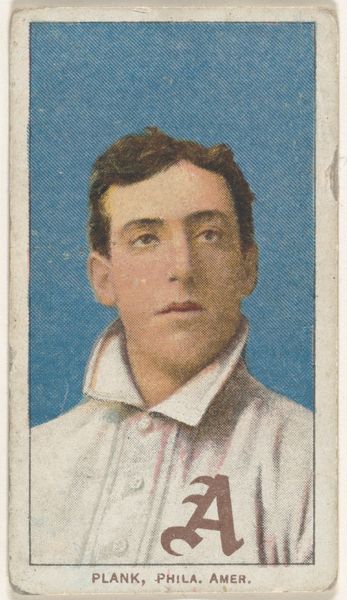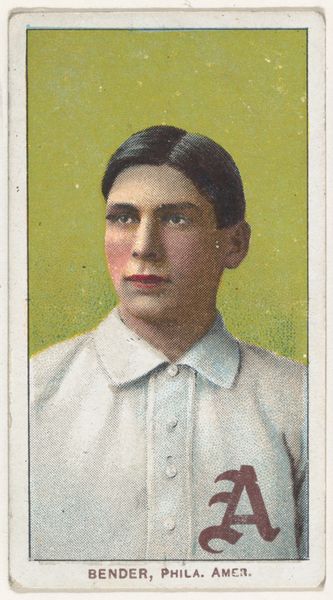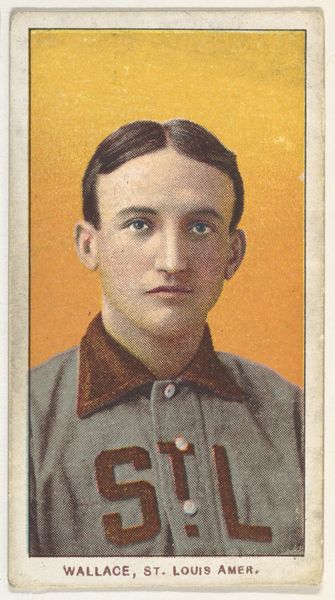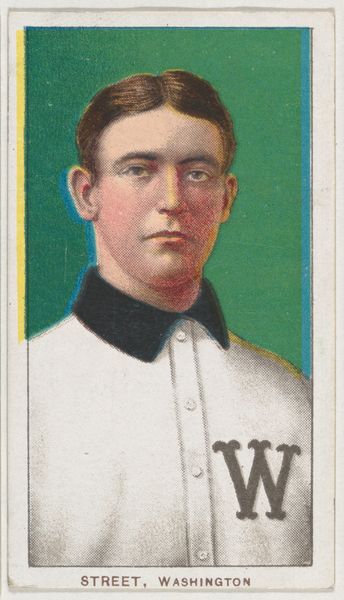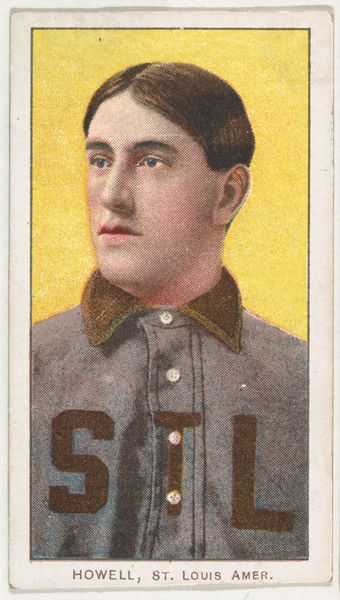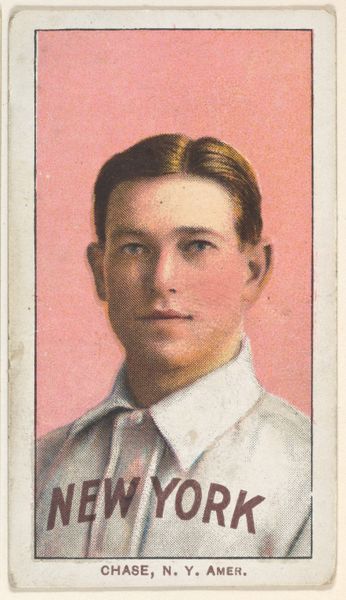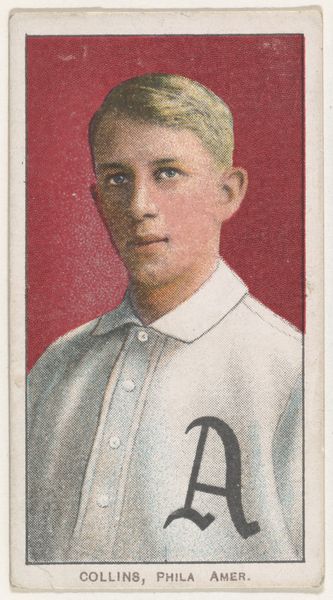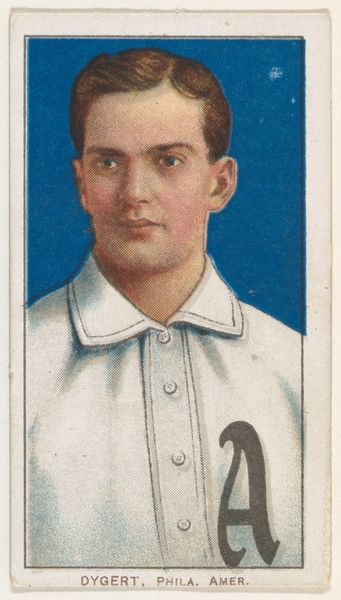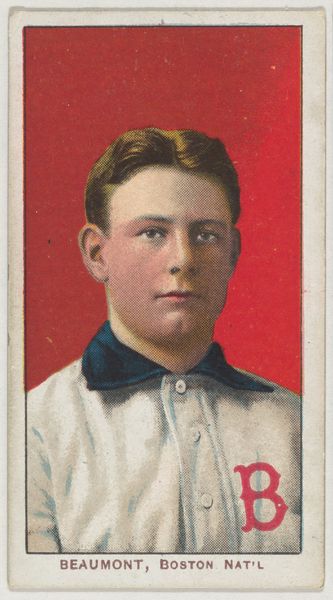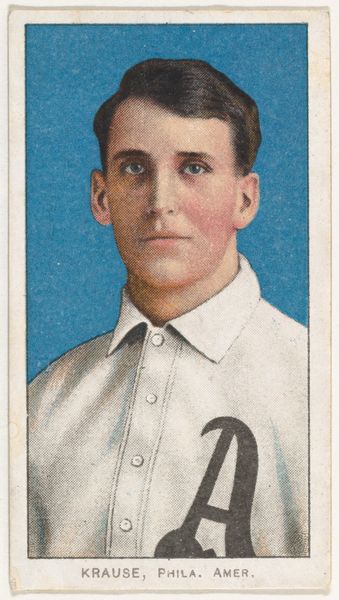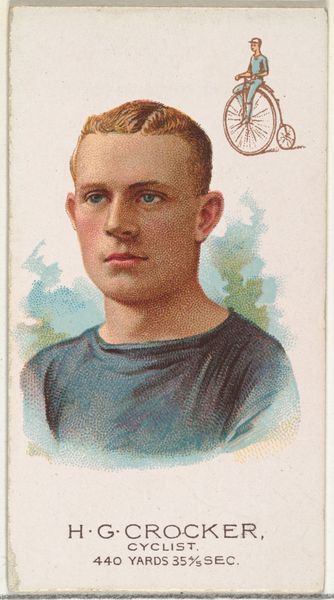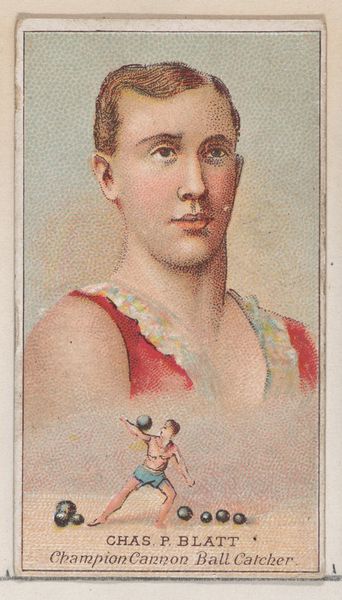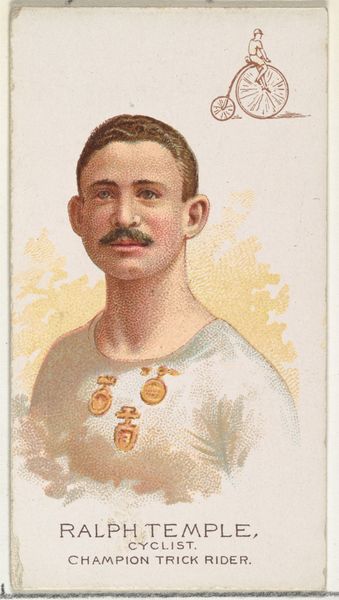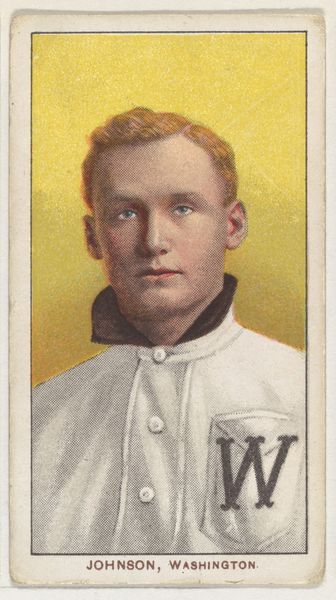
Unglaub, Washington, American League, from the White Border series (T206) for the American Tobacco Company 1909 - 1911
0:00
0:00
drawing, print
#
portrait
#
drawing
# print
#
caricature
Dimensions: Sheet: 2 5/8 x 1 7/16 in. (6.7 x 3.7 cm)
Copyright: Public Domain
Editor: This is "Unglaub, Washington, American League," a baseball card from the White Border series made by the American Tobacco Company between 1909 and 1911. It’s a small print, really more of a portrait, of a baseball player in his uniform. The printing looks rather mass-produced... How should we interpret this today? Curator: Think about the materials. We're looking at cardboard, ink, and a specific printing process. This wasn’t made in a fine art studio but likely rolled off an industrial press as part of a massive marketing campaign. The value here isn't in the artistic mastery, but in the social implications. Editor: What do you mean by "social implications?" Curator: Consider who had access to these cards, and why the American Tobacco Company would produce them. They were inserted into cigarette packs, weren't they? Think about labor, consumer culture, and the popularization of baseball as a spectacle. These cards fueled that spectacle. Editor: So the art lies not in the aesthetic of the card itself, but in its function as a commodity within a specific historical context? Curator: Exactly! And its scarcity now adds another layer. Once a cheap throwaway item, these cards are now collectibles, highly valued based on condition and rarity. It represents a huge transformation in materiality, cultural value, and market. The initial cost of producing this card must have been fractional, whereas now its retail value could reach thousands. Editor: It's amazing how the function of something so simple can shift so dramatically. Curator: Precisely. Studying these baseball cards can provide great insight into mass production, the rise of celebrity culture, and the history of consumerism. The value isn't just in the face, but in the entire process of making and using. Editor: I hadn't considered how the materials and means of production completely change how we should approach the card. Curator: Considering the raw materials of its creation, as well as its lifespan, and purpose can really shift your understanding of objects like this.
Comments
No comments
Be the first to comment and join the conversation on the ultimate creative platform.
